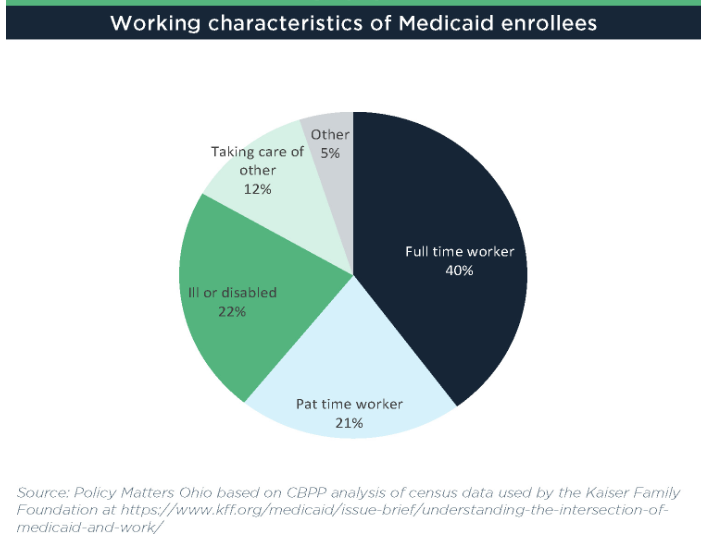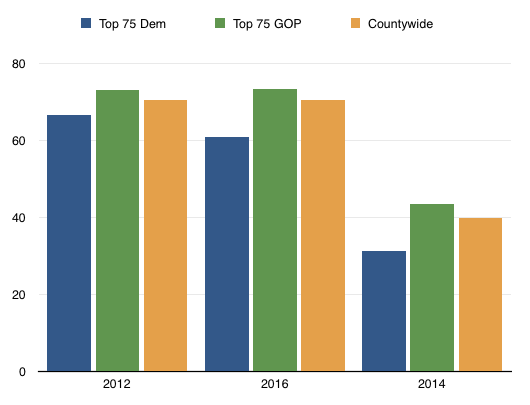Interesting report from Policy Matters Ohio concludes that mandating work requirements for Medicaid enrollees would drive down health coverage in Ohio and would be contrary to Medicaid’s stated goals.
Policy Matters says: “Rigid work requirements would not meaningfully improve work participation, but they would kick people off of insurance, many who are working, reversing hard-won progress in Ohio. Physicians groups like the American Medical Association, the American Academy of Family Physicians, the American Academy of Pediatrics and others oppose work requirements because they impose unnecessary barriers to health care.”

“New work requirements will not meaningfully increase work participation because most Medicaid recipients In Ohio are already working — or, they are eligible to be exempted from work requirements. 61 percent of working-age Medicaid enrollees are employed: 40 percent, full time and 21 percent, part time. Another 22 percent have an illness or injury that prevents them from working and 12 percent are caregivers. Five percent are not working for other reasons: some are students, some retired and some are looking for work.”
Another research group, Community Solutions has lots of good information on this issue. One thing their research shows is how a Medicaid work requirement will result in a big expense to government. They write: “Currently, eligibility is primarily a byproduct of income. With work requirements, all 700 thousand expansion enrollees would have to go through some level of adjudication on the state, local and/or provider level.”
In its petition to Health and Human Services (HHS), this is the list of categories that Ohio is requesting will be exempted from Medicaid work requirement:
- 50 years of age or older
- Physically or mentally unfit for employment
- Participant in the Specialized Recovery Services Program
- Caring for a disabled/incapacitated household member
- Pregnant women
- Parent/caretaker/residing in same house with minor child
- Applied for or receiving Unemployment Compensation
- In school at least half-time
- Participating in drug or alcohol treatment
- An assistance group member subject to and complying with any work requirement under the Ohio Works First
(OWF) program - Applicant for or recipient of Supplemental Security Income (SSI)
- Limit to counties that have an unemployment rate of more than 10% or do not have a sufficient number of jobs to provide employment for the individual.
Work Requirement Increases Cost And Size Of Government
Community Solutions states:
“The reality of this and other work requirement proposals is that it will increase the cost of the program as it will increase the size and operational requirements of government. Data from Virginia, Kentucky, and Pennsylvania demonstrates this, with governments in those states reporting that the operational costs for implementation would number in the hundreds of millions
In Cuyahoga County alone, it is estimated that nearly 30 percent of the expansion population will have to go through some level of appraisal by a county case worker before eligibility is granted. This new process, which subverts the efficiency of the current, data-driven system to one that is more dependent on human activity, will increase the variable costs of the state and county governments as well as the providers who rely on eligibility to ensure predictable revenue cycles.
Cuyahoga County, in fact, has testified that this activity of appraisal and adjudication will increase their costs in the millions. In its calculations, Ohio does not contemplate the cost of administration on the state or local level. The state also foregoes including how the increase in uncompensated care may increase disproportionate share payments to hospitals, which is also a Medicaid expense.”
























